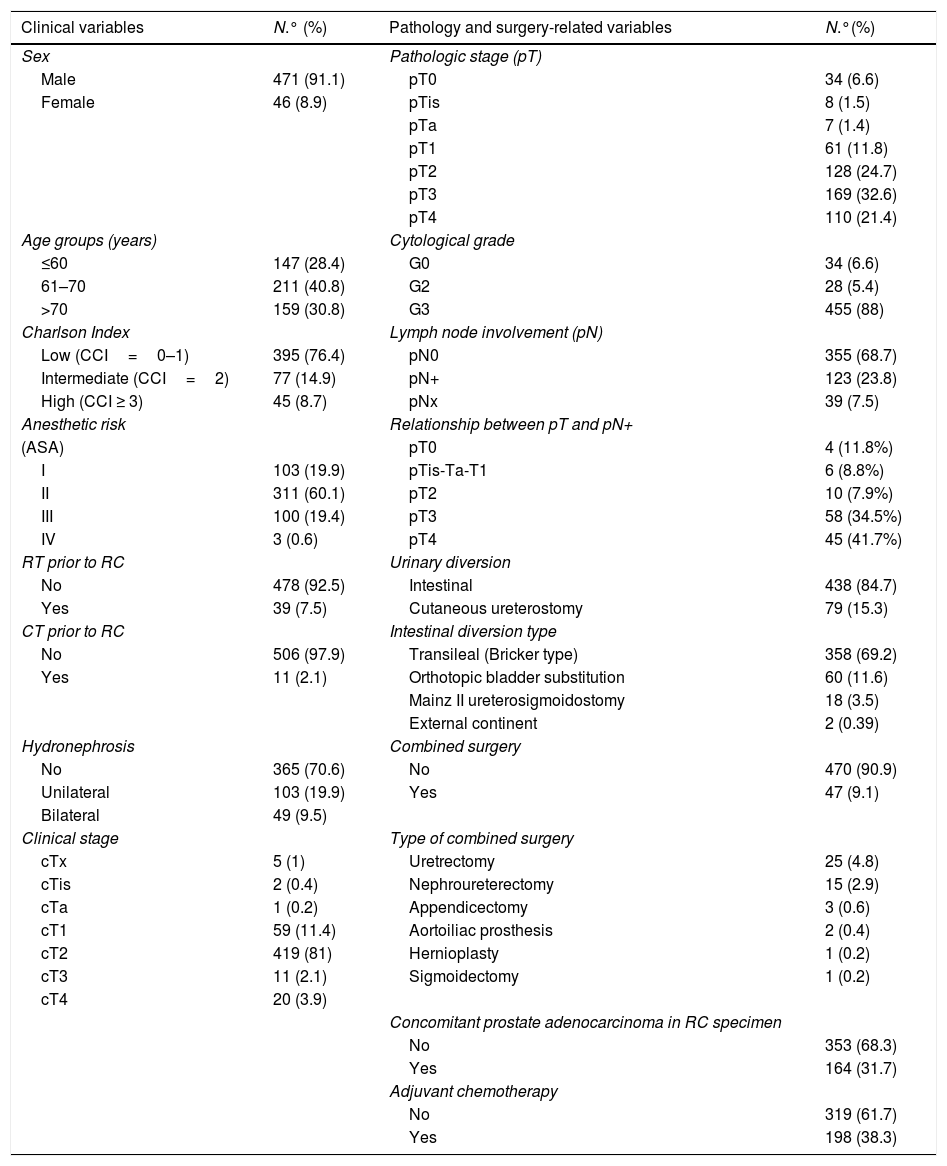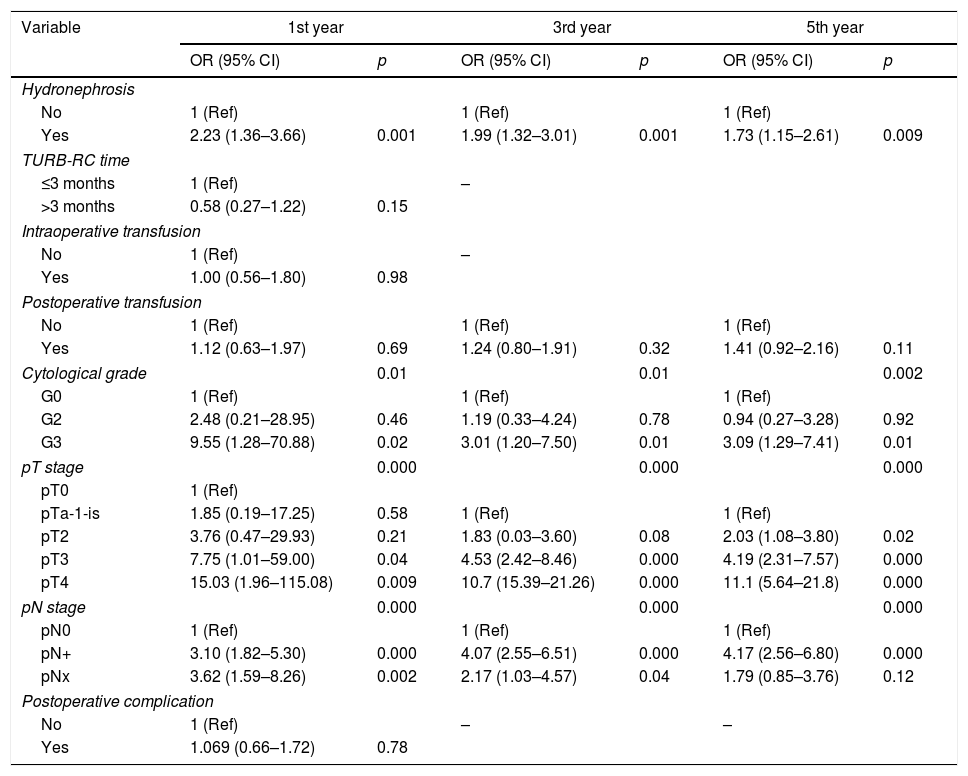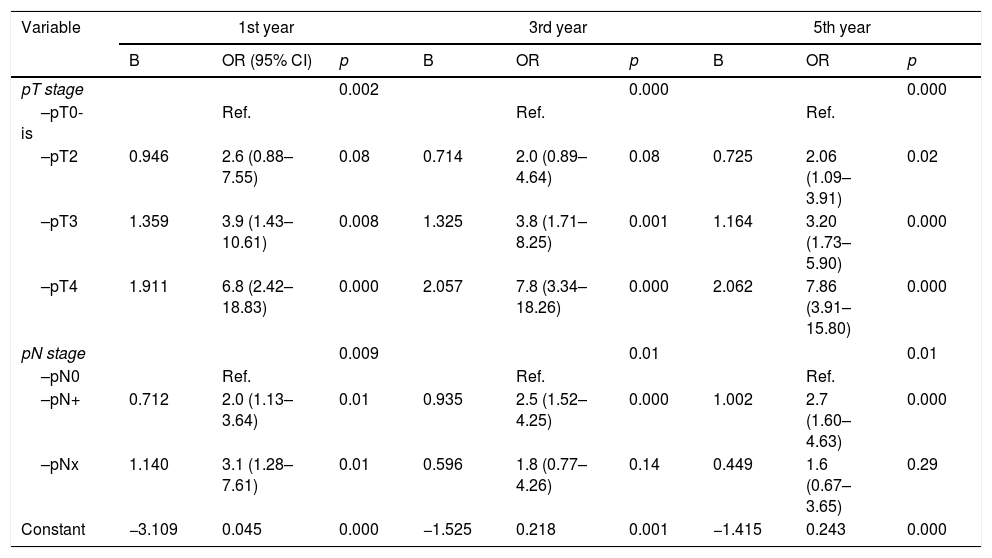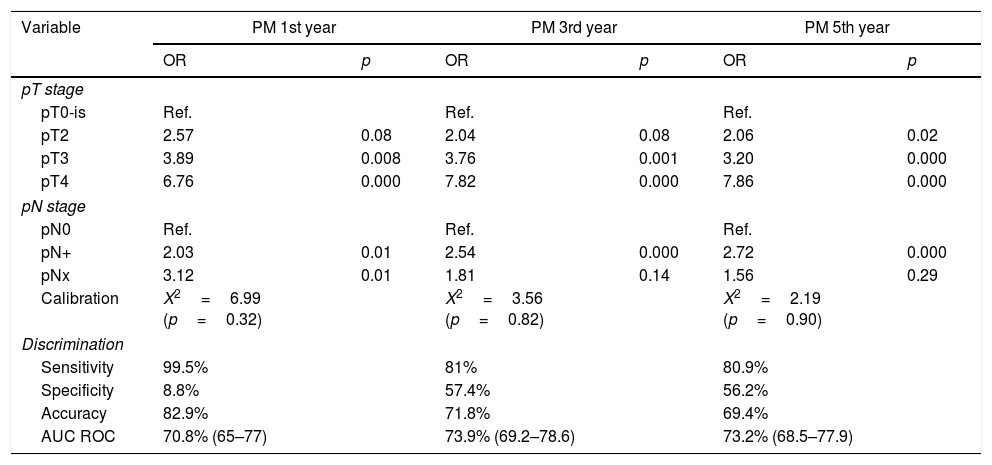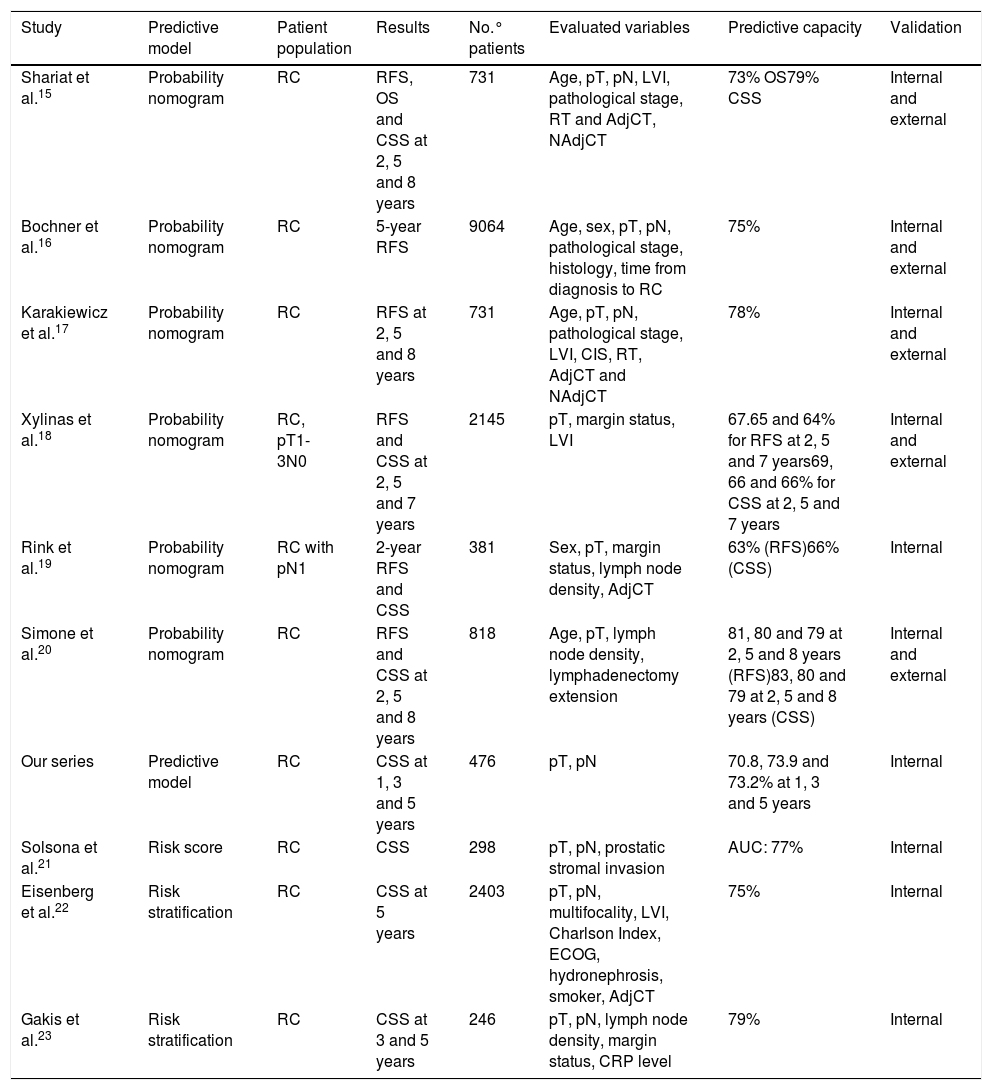Based on preoperative clinical and postoperative pathological variables, we aim to build a prediction model of cancer specific mortality (CSM) at 1, 3, and 5 years for patients with bladder transitional cell carcinoma treated with RC.
Material and methodsRetrospective analysis of 517 patients with diagnosis of cell carcinoma treated by RC (1986–2009). Demographic, clinical, surgical and pathological variables were collected, as well as complications and evolution after RC.
Comparative analysis included Chi square test and ANOVA technique. Survival analysis was performed using Kaplan–Meier method and log-rank test. Univariate and multivariate analyses were performed using logistic regression to identify the independent predictors of CSM. The individual probability of CSM was calculated at 1, 3 and 5 years according to the general equation (logistic function). Calibration was obtained by the Hosmer–Lemeshow method and discrimination with the elaboration of a ROC curve (area under the curve).
ResultsBC was the cause of death in 225 patients (45%); 1, 3 and 5-year CSM were 17%, 39.2% and 46.3%, respectively.
The pT and pN stages were identified as independent prognostic variables of CSM at 1, 3 and 5 years. Three prediction models were built. The predictive capacity was 70.8% (CI 95% 65–77%, p=.000) for the 1st year, 73.9% (CI95% 69.2–78.6%, p=.000) for the third and 73.2% (CI% 68.5–77.9%, p=.000) for the 5th year.
ConclusionsThe prediction model allows the estimation of CSM risk at 1, 3 and 5 years, with a reliability of 70.8%, 73.9% and 73.2%, respectively.
Elaborar un modelo predictivo de mortalidad cáncer específica (MCE) a 1, 3, y 5 años basándonos en variables clínicas precirugía y patológicas poscirugía en pacientes con tumor urotelial vesical tratados con cistectomía radical.
Material y métodosAnálisis retrospectivo de 517 pacientes diagnosticados de tumor urotelial vesical y tratados con cistectomía radical (1986 y 2009). Se recogieron variables demográficas, clínicas, quirúrgicas y patológicas, así como complicaciones acontecidas y evolución tras cistectomía radical.
Análisis comparativo con test de Chi cuadrado y ANOVA. Cálculo de supervivencia con método de Kaplan-Meier y test de log-rank. Análisis univariante y multivariante mediante regresión logística para identificar las variables predictoras independientes de MCE. Se calculó la probabilidad individual de MCE a 1, 3 y 5 años según la ecuación general (función logística). La calibración se obtuvo mediante método de.
Hosmer-Lemeshow y la discriminación con elaboración de una curva ROC (área bajo la misma).
ResultadosEl tumor urotelial vesical fue la causa de muerte en 225 pacientes (45%). Se obtuvo una MCE el 1.°, 3.° y 5.° años del 17%, 39,2% y 46,3% respectivamente.
El estadio pT y pN se identificaron como variables pronósticas independientes de MCE al 1.°, 3.° y 5.° años. Se construyeron 3 modelos predictivos. La capacidad predictiva fue del 70,8% (IC95% 65-77%, p=0,000) para el 1.° año, del 73,9% (IC95% 69,2-78,6%, p=0,000) para el 3.° año y del 73,2% (IC95% 68,5-77,9%, p=0,000) para el 5.° año.
ConclusionesEl modelo predictivo permite estimar el riesgo de MCE a los 1, 3 y 5 años con fiabilidad del 70,8, 73,9 y 73,2% respectivamente.
Artículo
Comprando el artículo el PDF del mismo podrá ser descargado
Precio 19,34 €
Comprar ahora








